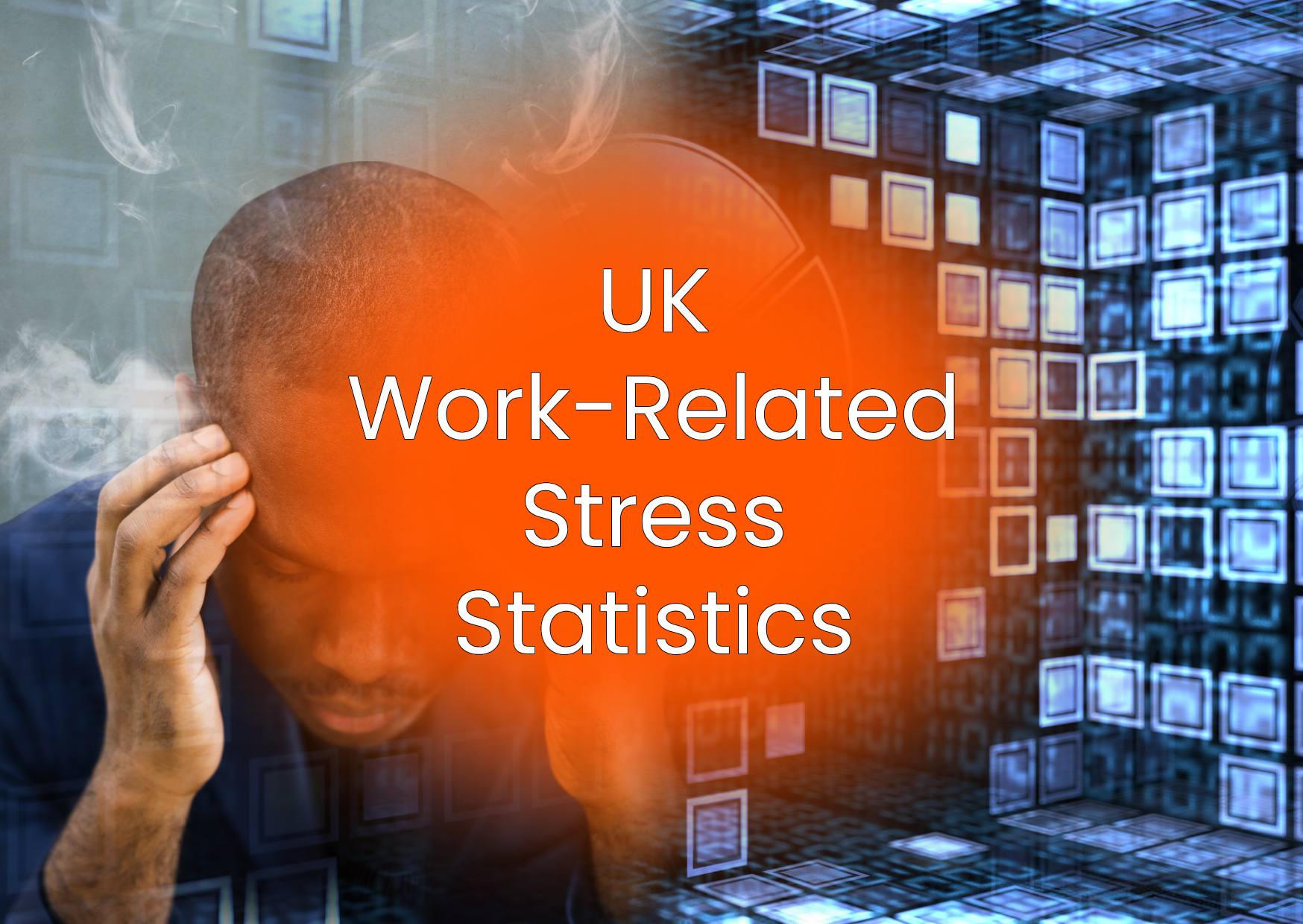Work Related Stress Statistics in the UK 2023
In this blog, we’ll explore what work-related stress is, the factors that contribute to it, and how it compares to previous years.
We’ll also delve into its impact on both employees and employers, and discuss strategies that companies can employ to address this growing concern.
To help you better understand the situation, we’ll be including a detailed graph of work-related stress statistics.
This visual aid will offer a clear picture of the current state of work-related stress in the UK.
Contents
UK Work-Related Stress Statistics Chart
What Factors Contribute to Work-Related Stress?
How do Stress Statistics Compare with Previous Years?
What is the Impact of Work-Related Stress on Employees and Employers?
How Can Companies Address Work-Related Stress?

UK Work-Related Stress Statistics Chart
As of the current data available in 2023, these are the UK stress statistics according to the Health and Safety Executives (HSE)
This chart represents the distribution of work-related illnesses in the UK for the year 2021/22. It includes stress, depression, anxiety, other illnesses, and those exacerbated by COVID-19.
What is Work-Related Stress?
Work-related stress is a significant and growing issue in today’s fast-paced work environments.
It’s a response that can occur when the demands of a job exceed an individual’s capacity to cope.
This imbalance can lead to both physical and psychological health issues, affecting productivity and overall quality of life.
Stress can manifest in various ways, including feelings of being overwhelmed, anxious, irritable, or depressed.
Physically, it can lead to headaches, sleep disturbances, and even more serious health complications over time.
It’s important to remember that a certain level of stress can be a normal part of work and can even be beneficial in motivating us.
However, when stress becomes chronic and unmanageable, it can have serious consequences.

What Factors Contribute to Work-Related Stress?
Work-related stress can be triggered by a variety of factors.
Understanding these can help employers and employees alike to better manage and mitigate stress in the workplace.
Here are some of the key contributors:
Excessive Workload
When employees are consistently given more work than they can reasonably handle, it can lead to chronic stress.
Long hours, tight deadlines, and high expectations can all contribute to an overwhelming workload.
Lack of Control
Feeling a lack of control over one’s work or workplace decisions can be a significant source of stress.
This can include having little input into one’s duties, how work is done, or changes in the workplace.
Poor Work Environment
A work environment that is physically uncomfortable or emotionally toxic can lead to increased stress.
This can include factors like poor lighting, excessive noise, or a culture of bullying and harassment.
Job Insecurity
In an uncertain economy, worries about job security, layoffs, or redundancy can be a major source of stress.
Work-Life Imbalance
In today’s connected world, the lines between work and personal life can often blur, leading to stress.
This can be especially true for remote workers or those with demanding or irregular schedules.
Lack of Support
A lack of support from management or colleagues can leave employees feeling isolated and unsupported, increasing stress levels.
Remember, different people react to these factors in different ways.
What may be stressful for one person might not be for another.
The key is to recognise these potential stressors and take steps to address them.

How do Stress Statistics Compare with Previous Years?
When we look at the stress statistics for the UK and compare them with the previous years, we can see some interesting trends.
In the year 2020/21, there were 1.7 million workers suffering from work-related ill-health, with 850,000 of those being new cases. Out of these, 451,000 workers were suffering from a new case of work-related stress, depression, or anxiety.
Comparatively, in 2019/20, the number of new work-related ill-health cases was lower by 212,000. The number of new cases of work-related stress, depression, and anxiety was lower by 104,000.
This indicates a significant increase in work-related stress, depression, and anxiety cases from 2019/20 to 2020/21.
Fast forward to 2023, the estimated number of workers in Great Britain suffering a work-related illness is 1.8 million, with stress, depression, and anxiety making up around half of the cases.
There were an estimated 914,000 cases of work-related stress, depression, or anxiety.
This shows a continued increase in work-related stress, depression, and anxiety cases, highlighting the growing concern of mental health in the workplace.

What is the Impact of Work-Related Stress on Employees and Employers?
Work-related stress has a profound impact on both employees and employers, affecting not just the individual’s health but also the overall productivity and success of an organisation.
Impact on Employees
For employees, chronic work-related stress can lead to a range of physical and mental health issues.
These can include headaches, sleep disturbances, high blood pressure, and even increased risk of heart disease.
Chronic stress can lead to anxiety, depression, and burnout.
It can affect an individual’s ability to concentrate, make decisions, and perform their job effectively.
Over time, this can impact job satisfaction, morale, and relationships with colleagues.

Impact on Employers
For employers, the impact of work-related stress is often seen in the form of decreased productivity and increased absenteeism.
When employees are stressed, they are more likely to take sick leave, leading to a loss of work hours.
Moreover, high levels of stress can lead to higher staff turnover, as employees may choose to leave a stressful work environment.
This can result in additional costs for recruitment, training, and onboarding of new staff.
Work-related stress can also lead to a negative work culture, affecting the overall morale and productivity of the team.
In severe cases, it can even lead to reputational damage if not addressed appropriately.

How Can Companies Address Work-Related Stress?
Addressing work-related stress is crucial for maintaining a healthy and productive workforce.
Here are some strategies that companies can employ:
Promote a Healthy Work-Life Balance
Encourage employees to take regular breaks and make sure they’re not consistently working long hours.
Promote flexible working arrangements where possible to help employees balance their work and personal life.
Improve Communication
Open and honest communication can help to alleviate stress.
Regular team meetings, one-to-ones, and feedback sessions can help employees feel heard and understood.
It’s also important to communicate clearly about job roles and expectations to avoid confusion and stress.
Provide Support
Offering employee wellbeing services can make a significant difference.
This could include access to counselling services, mental health resources, stress management training or wellbeing workshops.
Regular health and wellbeing check-ins can also be beneficial.

Foster a Positive Work Environment
Creating a positive and supportive work environment can help to reduce stress.
This includes promoting teamwork, recognising and rewarding hard work, and dealing with conflicts in a constructive manner.
Encourage Physical Activity
Physical activity is a great stress reliever.
Encourage employees to stay active by offering gym memberships, organising team sports events, or promoting active commuting.
Training for Managers
Provide training for managers to help them recognise the signs of stress and respond appropriately.
They should be equipped to support their team members and direct them to available resources.
Remember, every employee is unique, and what works for one person may not work for another.
It’s important to take a personalised approach to stress management and regularly review and adapt your strategies.
Addressing work-related stress is not just beneficial for employees but also for the overall success of the company.

Work-related stress is a significant issue that impacts millions of workers and businesses across the UK.
However, with awareness, understanding, and proactive strategies, it’s a challenge that we can address.
By promoting a healthy work-life balance, fostering open communication, providing employee wellbeing services, and creating a positive work environment, we can help mitigate the effects of stress.
Remember, a happy and healthy workforce is not just good for employees, but it’s also beneficial for the overall success and productivity of a company.
Author
Tyler Lowe – Health & Wellbeing Speaker
BSc Sport & Exercise Rehabilitation


